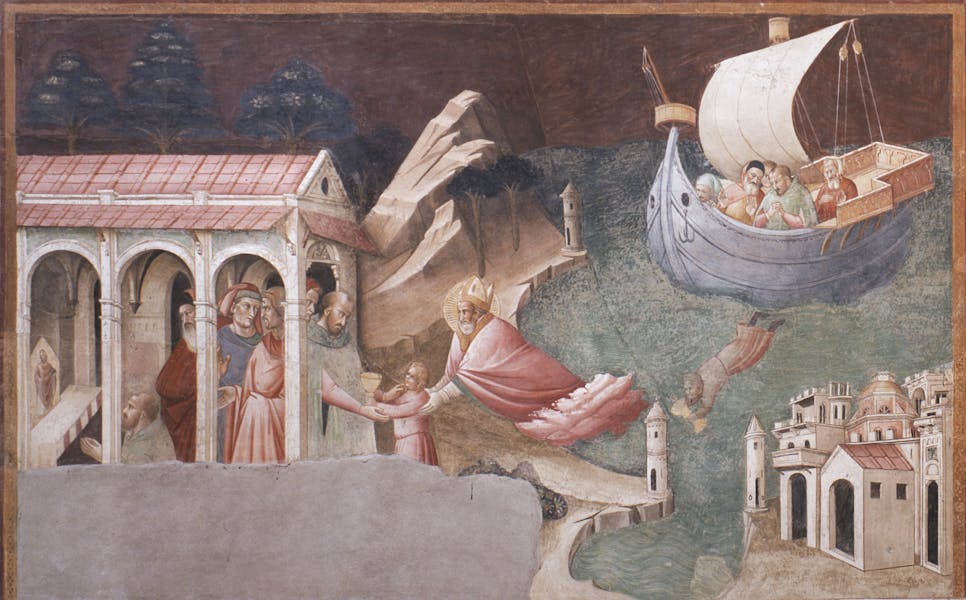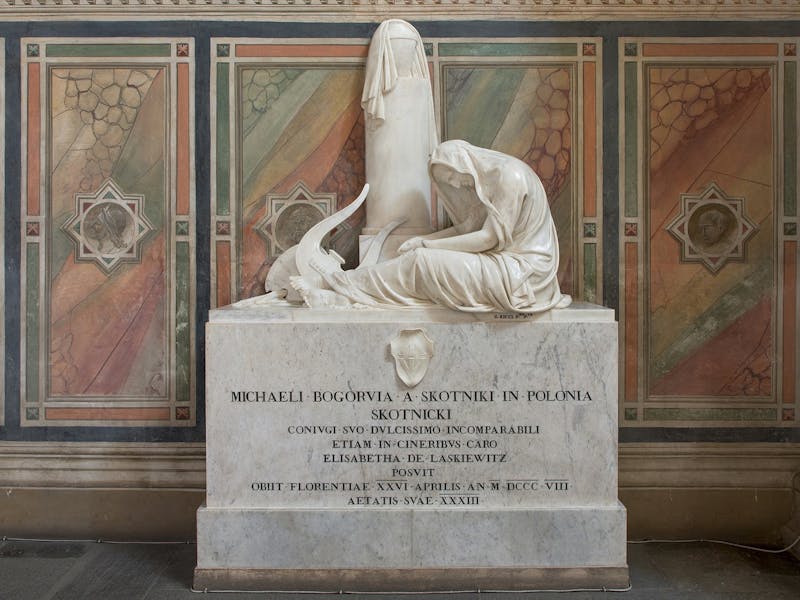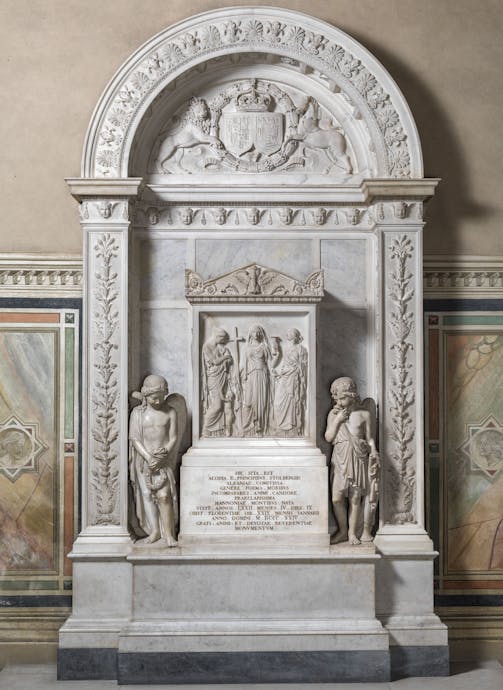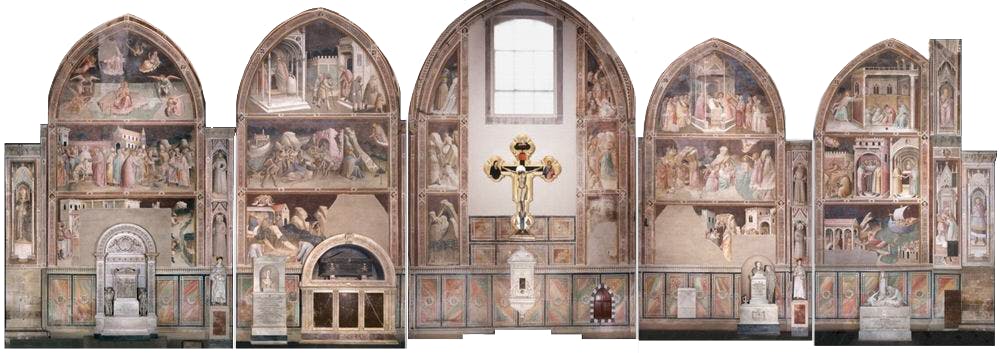
Castellani Chapel
Michele di Vanni Castellani commissioned the construction and decoration of this chapel for his family in 1383. Dedicated to St. Anthony the Abbot, it consists of two square, cross-vaulted bays divided by a pointed arch.
The frescoes on the walls and vault were painted by Agnolo Gaddi and artists in his workshop, including Gherardo Starnina. The cycle illustrates stories from the lives of four saints: St. John the Evangelist, St. Anthony the Abbot, St. John the Baptist and St. Nicholas of Bari. Figures of saints associated with the Franciscan order in trompe-l'œil niches adorn the pilasters, while the vaults contain the four Evangelists and four Doctors of the Church.

Agnolo Gaddi, Miracle of the Golden Cup, scene from the Stories of the Lives of St. Athony the Abbot, St. John the Baptist, St. John the Evangelist and St. Nicholas of Bari, c. 1383–5. Basilica of Santa Croce, south transept, Castellani Chapel
The chapel was renovated in 1815 to host religious services in the colder months of the year. The entrance was shut off by a wooden wall to improve thermal insulation, while a marble and semi-precious stone altar was installed with an 18th century canopy attributed to the circle of Matteo Nigetti (now in the museum) and with Giorgio Vasari's Last Supper, painted in 1564 for the nearby convent of the Murate. The walls, which had been whitewashed over in the 17th century, received a new coat of whitewash leaving only the vaults on view.
Since the 19th century the chapel has housed the funeral monuments of foreign figures resident in Florence: Polish painter Michal Bogoria Skotnicki (Stefano Ricci, 1808); Polish diplomat and composer Michal Kleophas Oginski (Francesco Pozzi, 1836–7); and Louise of Stolberg-Gedern, Countess of Albany (Luigi Giovannozzi and Emilio Santarelli, 1824–30), a leading light of the literary salons in 19th century Florence and the last flame of Vittorio Alfieri.

Stefano Ricci, Monumental tomb of Michal Bogoria Skotnicki, 1808. Basilica of Santa Croce, south transept, Castellani Chapel

Luigi Giovannozzi, Emilio Santarelli, Monumental tomb of Louise of Stolberg-Gedern, Countess of Albany, 1824–30. Basilica of Santa Croce, south transept, Castellani Chapel
When the wooden wall was removed in 1870, a search began for the frescoes and they were finally restored by Amedeo Benini in 1921-2.
The most recent renovation, dating to the 1970s, entailed further changes to the liturgical furnishings. Three late 13th century reliefs attributed to Giroldo da Como depicting the Three Marys at the Tomb and Thurifer Angels, probably fragments of a lost tomb, were installed as altar frontals, while the tabernacle carved by Mino da Fiesole c. 1483 is from the convent of the Murate. The Crucifix hanging on the back wall was painted by Pietro Nelli in conjunction with Niccolò di Pietro Gerini for the monastery of San Salvi in 1380, while polychrome terracotta figures of St. Francis and St. Dominic from the Della Robbia workshop (1490–1500) adorn the piers.

View of the Castellani Chapel. Basilica of Santa Croce, south transept